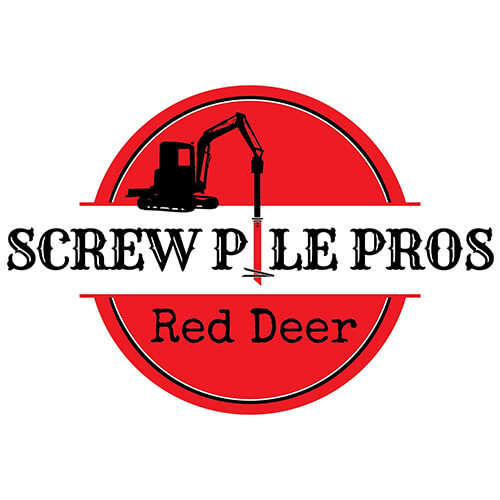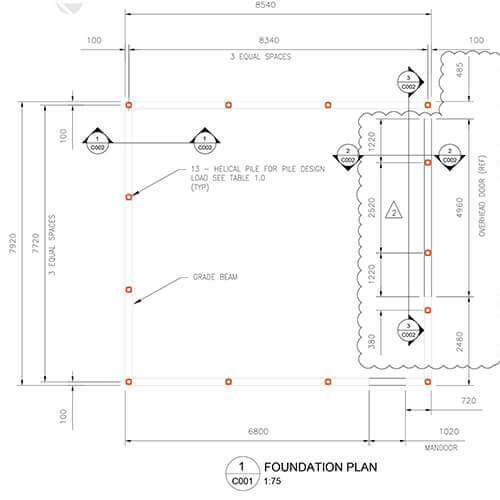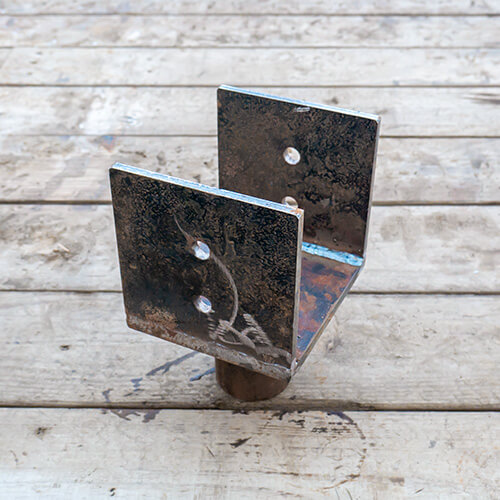Screw Piles for Decks
In Red Deer County, screw piles or helical piers make a perfect foundation for backyard decks and porches. The Red Deer Screw Pile Pros can supply and install helical piles for your new deck construction project. Helical piles are affordable, fast, and non-invasive to install. CCMC screw piles from the Red Deer Screw Pile Pros are Alberta Building Code compliant and will last well past the lifespan of your deck. Contact the Red Deer Screw Pile Pros for more information on screw piles for decks.
Deck Foundations with Certified Screw Piles Are:
- Economical
- fast, easy, non-invasive installation, and
- Long-lasting and durable
Because of this, screw pilings are the best option for your next deck renovation. Our skilled installation teams offer the best customer service at a great price.
Proudly Serving Red Deer County
Contact Us for a Quote Today

Red Deer's Certified Deck Pile Installer
- Superior to concrete deck piles in every way
- Meets CCMC standards and Alberta Building Code Compliant
- No digging or excavation required with no fill to haul away
- Specialized equipment able to get through most backyard gates
- No frost heaving or settling
- Fast installation, most deck foundations done in under an hour
Benefits of Using Helical Piles for Decks
Because of this, screw pilings are the best option for your next deck renovation. Our skilled installation teams offer the best customer service at a great price.
When deciding between typical concrete footings or screw piles for your new deck, there are things to take into account.
Screw piles can be installed without any excavation. Drilling a hole, removing the earth, and then filling it with concrete are all extra steps involved in creating a concrete pile. The extra work of needing to take away the excavated soil adds to the workload and increases the cost of your deck project.
Directly following the installation of screw piles, you can start constructing your deck on top of your screw pile foundation. When using concrete piles, the work has to be delayed for nearly a week until the concrete has cured to the point where construction can resume.
Frostjacking is a big problem with concrete piles. Concrete piles frequently develop cracks near the frost line below the surface of the ground. Through these fissures, moisture can enter the pile and, when it freezes, push the concrete pile apart, lifting it. Fortunately, this issue is not a concern with helical screw piles because of their steel construction. Frostjacking is impossible as long as the screw pilings’ helix has been inserted far below the frost line.
Screw piles are unquestionably a better option when compared to concrete piles. In terms of durability, lifespan, time, and cost, it is easy to understand why screw piles have become the new norm for deck foundations.
Guaranteed Stability & Safety
Another advantage to using screw piles for decks is the ability to verify the load capacity of your piles.
A professional engineer who specialises in structural engineering will calculate the required load capacity that your screw piles need to have for your covered or walkout deck. These pile capacities will be specified in a document called an engineered foundation design. Helical screw piles are installed into the ground using specialized equipment that can monitor and record the applied torque. The piles are screwed into the soil until they reach the desired depth and load-bearing capacity. During installation, your approved Red Deer Screw Pile Pros installer will reference your foundation design and monitor the applied torque needed to turn your screw piles into the soil. Engineered screw piles allow the installer to know the load capacity of each helical pile from the amount of torque needed to turn the screw pile’s helix through the soil. Once the required amount of torque applied to the pile has been reached, the screw pile installer knows that that specific screw pile has also reached the correct minimum load carrying capacity specified by the engineer.
These installation numbers are then recorded and provided to the engineer. The engineer can then verify that your deck foundation conforms to the Alberta Building Code and sign off on your foundation design, which can be provided to the county for approval of your building permit.


How Do Deck Beams Attach to Screw Piles?
Once the screw piles are in place, screw pile caps are positioned on top of each pile. There are many different types of screw pile caps that act like adaptors to attach structures to the helical pile shaft. Deck caps are specifically designed with a bracket and holes to accommodate the placement and attachment of deck beams.
Made of laminated wood boards, deck beams are positioned on top of the screw pile caps. The beams are aligned with the brackets to ensure a secure and proper fit, and they are secured using screws. The fasteners are inserted through the holes in the pile cap brackets and into the beams, securely connecting them together.
Once the deck beams are securely attached to the screw pile caps, the remaining deck construction can proceed. This includes installing joists, decking boards, and other components to complete the deck structure.
Screw pile caps provide a stable and reliable connection between the screw piles and deck beams, ensuring proper load transfer and structural integrity. They help distribute the weight and forces from the deck to the screw piles, which are designed to provide strong and stable foundation support. Also, screw pile caps make the positioning and levelling of deck beams much simpler.


